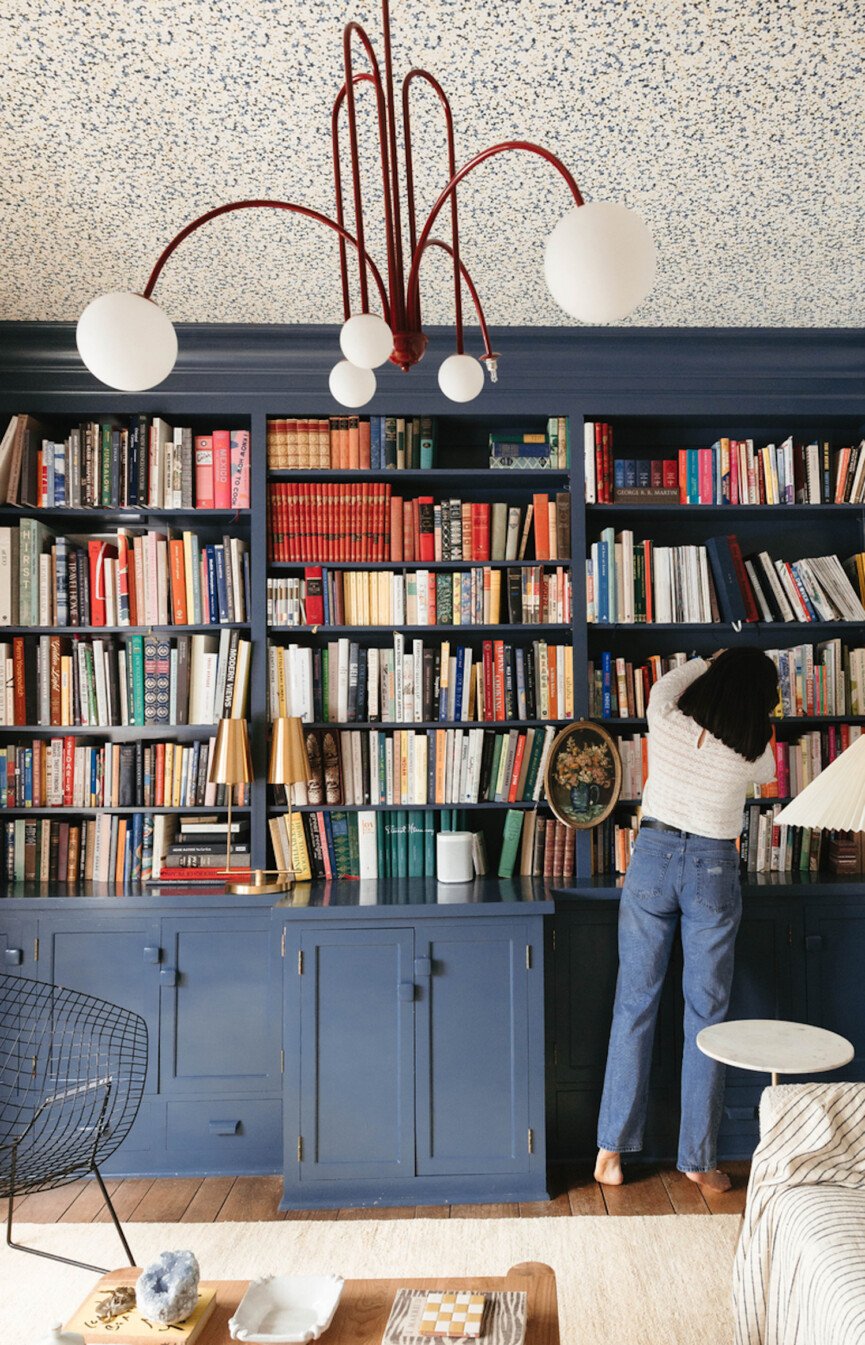Should You Go Dark? Tips for Painting Your Space a Deeper Shade
Embrace the drama. The post Should You Go Dark? Tips for Painting Your Space a Deeper Shade appeared first on Camille Styles.

Almost a year ago, I decided to take my living room walls from a crisp white to a deep, moody blue (Benjamin Moore Midnight, to be exact), and I haven’t looked back. Moody paint colors can completely transform a space, bringing depth, drama, and dimension—especially in small New York City apartments like mine. While dark walls aren’t for everyone, they offer a bold alternative to the neutrals we see everywhere these days. Plus, if you’re a renter like me, paint is an affordable way to make your space feel more custom without worrying about your security deposit. It’s the easiest way to feel like you’ve moved into a brand-new home without going anywhere!
If you’ve been thinking about painting your space a darker color but are wavering a bit, that’s understandable, too. Here, you’ll find valuable tips from interior design pros regarding everything you need to think about when it comes to dark paint. But remember: it really is just paint—if you change your mind in six months, so be it!
Featured image from our interview with Kate Arends by Suruchi Avasthi.

Be Mindful About Stopping Points
If you’re going dark in a room that’s part of an open floor plan, this tip from designer Anna Baraness is a key one. “It’s important to consider the starting and stopping points of the dark paint as it transitions into the adjacent spaces, especially if those adjacencies are painted a light color,” the founder of Studio AK Interiors explains. “Ideally there is a cased opening, corner bead, or other architectural detail that creates a natural stopping point and logical transition to a different wall color,” she says.
Look to Your Room’s Size and Lighting
Dark paint colors are by no means one size fits all. “Bright spaces thrive with bold blues or greens for drama, while warm browns or plums bring cozy vibes to dimmer rooms,” explains Elle Cole, the founder of Elle Cole Interiors. Of course, anyone taking on a paint project should always pick up swatches of the shades they’re considering and take note of how they appear at different times of day prior to committing to a color.
Color Drench
Sarah McCarty, the founder of Sarah McCarty Interiors, likes the idea of color drenching a room with a deep hue, painting the walls, ceiling, and trim all in one shade. “Change the sheen to add some dimension,” she says. “This not only creates a cohesive look, but a major vibe shift!”
Add Wainscoting
On the other hand, maybe you’re not ready to go all in with a dark color. In this instance, you can always add wainscoting to create a two-toned look, notes Rebecca Ward. Doing so will “break up the dark wall color,” she says, though keep in mind that it’s a tactic better left to those who own, not rent! “This approach works beautifully in dining rooms,” adds the founder of Rebecca Ward Design.

Decorate Like a Pro
You’ll want the furniture and accessories you choose for your space to nicely complement the dark paint color you select. “Pair dark walls with light furniture and rich textures to keep the space striking yet inviting,” Cole offers.
Metallics and prints also make for great accents. McCarty recommends going for metallic-colored statement art, throw pillows, or window treatments, adding in some warm-toned lighting, and bringing in a patterned rug to round out a room with dark walls.

 Fransebas
Fransebas 



























![35-year-old American moved to Chengdu and lives on $30,000 a year: '[It's] poverty in America, but in China I'm living large'](https://image.cnbcfm.com/api/v1/image/108167583-1751548516689-chinacelia1.jpg?v=1751549197&w=1920&h=1080)



